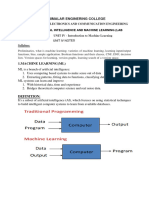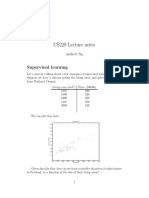0% found this document useful (0 votes)
56 views23 pagesCSC411: Optimization For Machine Learning: September 20-26, 2018
This document provides an overview of the CSC411 course on Optimization for Machine Learning held from September 20-26, 2018 at the University of Toronto. The course covers topics related to gradient descent algorithms like batch gradient descent and stochastic gradient descent. It discusses concepts such as learning rates, decaying learning rates, and how stochastic gradient descent can help optimization escape local minima and converge towards global minima for non-convex problems.
Uploaded by
john biancoCopyright
© © All Rights Reserved
We take content rights seriously. If you suspect this is your content, claim it here.
Available Formats
Download as PDF, TXT or read online on Scribd
0% found this document useful (0 votes)
56 views23 pagesCSC411: Optimization For Machine Learning: September 20-26, 2018
This document provides an overview of the CSC411 course on Optimization for Machine Learning held from September 20-26, 2018 at the University of Toronto. The course covers topics related to gradient descent algorithms like batch gradient descent and stochastic gradient descent. It discusses concepts such as learning rates, decaying learning rates, and how stochastic gradient descent can help optimization escape local minima and converge towards global minima for non-convex problems.
Uploaded by
john biancoCopyright
© © All Rights Reserved
We take content rights seriously. If you suspect this is your content, claim it here.
Available Formats
Download as PDF, TXT or read online on Scribd
/ 23






















































































